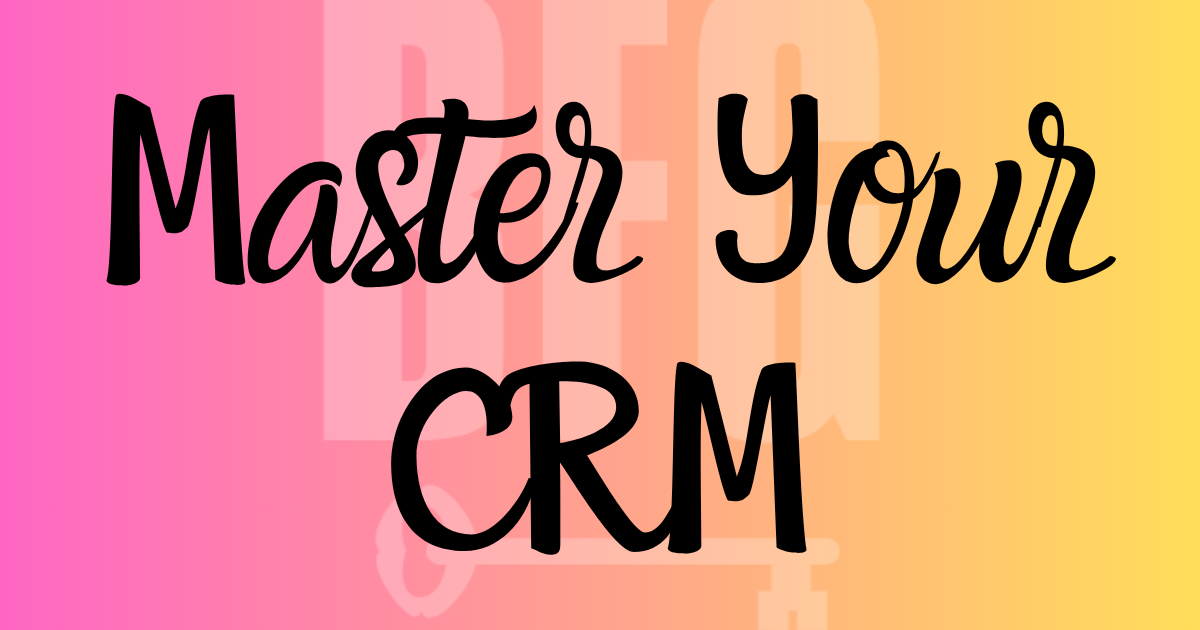Let’s get real: in this business, your ability to build and maintain relationships is everything.
That’s why your CRM isn’t just another tech tool.
It’s the heart of your business.
A well-oiled CRM isn’t about dumping leads into a system and hoping they call you back. It’s about knowing where every contact stands, who needs attention next, and what value you’re delivering at every step. When it’s running smoothly, it feels like your future is right there in front of you—clear, organized, and full of possibility.
Here’s how to keep it that way.
🛠️ First, What Is a CRM Really For?
Your CRM (Customer Relationship Manager) is not a contact list. It’s a relationship intelligence system.
A strong CRM should help you:
Track conversations and follow-ups
Segment leads by priority, location, type, or timeline
Automate communication without losing that personal touch
Keep all your notes, tasks, and reminders in one place
Know exactly what to do next — every single day
In short: it helps you stay top-of-mind without losing your mind.
📋 Big Frontier Group’s Core CRM SOPs (Standard Operating Procedures)
Whether you’re brand new or 300 closings in, these are non-negotiable habits if you want your CRM to work for you:
✅ 1. Tag Every Contact Immediately
Every person in your system should have at least one tag — based on location, type (buyer/seller/investor/agent/vendor), lead source, and timeline if known. Tags = filter power.
Tip: Create tags like
buyer-lead,costilla-county,hot-lead,vendor-plumber,referral-agent, etc.
✅ 2. Add Notes After Every Call
No one remembers what “Steve, maybe June?” means two weeks later. Use full sentences in notes. Think: “Spoke with Steve on 6/10 — interested in 5–10 acres near Fort Garland, wants to wait until job settles in July. Wife is a teacher.”
✅ 3. Use Tasks to Your Advantage
Every active contact should have a next step.
No floating leads. Ever.
Set a task right after your note: “Follow up on land listing availability July 15.”
✅ 4. Archive Cold Leads, Don’t Delete
You never know when a lead will resurface. Archive or retag colder leads with something like cold-2025 or not-ready. It clears your dashboard without losing future opportunity.
✅ 5. Review Your CRM Weekly
Just 15–30 minutes a week. Clean up duplicates, close completed tasks, and reprioritize. If you don’t control your CRM, it will start controlling you.
🧠 CRM Mindset = Relationship Mastery
Your CRM isn’t just a tool — it’s an extension of your brain and your brand.
The agents who win in this business are the ones who:
Show up consistently
Know their people
Follow up better than anyone else
Don’t let a hot lead fall through the cracks
Here’s how to make that real:
💡 Tips & Tricks to Become a CRM Ninja
📅 Use Smart Lists to Focus
Group contacts by urgency, location, or deal type. Then build a daily rhythm around reaching out to 5–10 of them at a time.
✏️ Use Email Templates + Personal Touch
Automate the structure, not the relationship.
Templates help you move fast. Personalization seals the deal.
🔁 Build in “Non-Sales” Follow Ups
Set reminders to check in on birthdays, new jobs, or life updates. Relationships are long games. “Just thinking of you!” goes a long way.
🧩 Integrate Social and Notes
If you’re connected on Facebook or Instagram, make a note of it. Know their kids’ names. Follow their band. Send them a “good luck” text before a community event. Be that kind of agent.
🧼 Declutter Monthly
Once a month, do a mini audit. Archive stalled leads, merge duplicates, and clean up tags. Keep it lean and useful.
Final Thought: Your CRM Is Your Safety Net
Markets shift. Leads slow. Budgets tighten.
But the agents with solid systems always find a way forward.
Because while others panic, they’re already three steps into the next opportunity — backed by a CRM that’s smart, human, and ready to work.
Want help setting up your CRM or creating systems that actually stick?
That’s what we’re here for.

